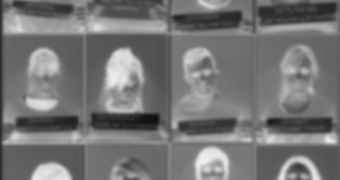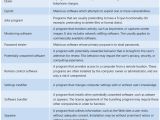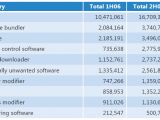Microsoft is offering a classification by species and a ranking by prevalence of potentially unwanted software code in the recently published Microsoft Security Intelligence Report July-December 2006. The classification of malware is done taking into consideration specific behavior, and is integrated into the definitions of Windows Defender. Adware, Backdoor, Browser modifier, Dialer, Exploit, Joke program, Monitoring software, Password stealer, Potentially unwanted software, Remote control software, Settings modifier, Software bundler, Spyware, Tool, Trojan, Trojan downloader and Trojan dropper.
Especially for your viewing pleasure I have included the Microsoft classification of potentially unwanted software at the bottom of this article. All you have to do is to click on the image in order to access a graphic that will offer you detailed definitions for each category of malicious code.
In the Microsoft Security Intelligence Report July-December 2006, the Redmond Company also delivers a ranking measuring the prevalence of potentially unwanted software. Users have to understand that this particular type of malware does not have a destructive purpose, and that it is primarily involved in monetizing Internet criminal activities.
According to the Microsoft Security Intelligence Report, the most prevalent piece of potentially unwanted software in 2006 was adware with 10,471,061 instances detected between April 11 and June 30, and another 16,709,368 examples identified by the end of the past year. Software bundler is a distant runner-up with 2,084,164 and 3,740,722 instances detected in the first and second half of 2006, and spyware is the third, with 2,185,191 and 3,496,078 detections over the same periods.

 14 DAY TRIAL //
14 DAY TRIAL // 

